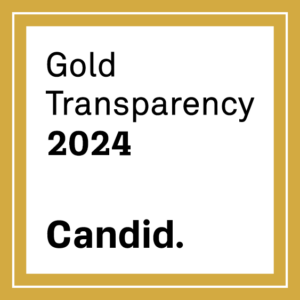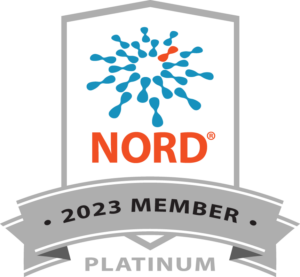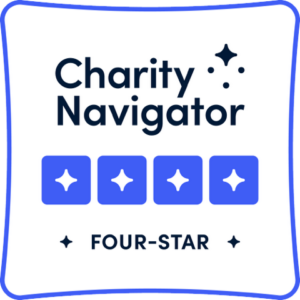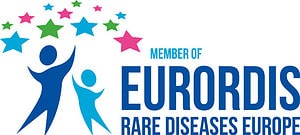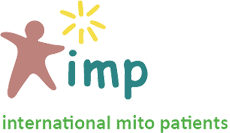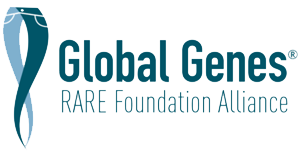Financial Assistance for the Mito Cocktail
The monthly out-of-pocket costs of the “mito cocktail” can be staggering. Our guide can help you get it covered by your insurance program.

By Heidi Martin-Coleman, RN
“Cut the Red Tape” Advocate
Many physicians suggest dietary supplements, vitamins, minerals, and other medications for individuals with Mito. Frequently, a number of supplements are administered simultaneously, hence the nickname “Mito Cocktail.” The specific combination and doses of supplements and medication included in a patient’s Mito Cocktail are highly individualized in order to meet the needs of that specific person’s cellular function.
Many individuals with Mito find that dietary supplements and medical food help to relieve symptoms and improve quality of life. However, the monthly out-of-pocket costs of medically necessary supplements can be staggering. Information regarding financial assistance for the Mito Cocktail and other medical food is one of MitoAction’s most frequent requests. Since financial assistance programs vary from state to state as well as country to country, keeping up with current funding sources is a daunting task. This guide is designed to provide a starting point for patients and their families to identify potential sources of financial assistance for the Mito Cocktail. As you explore some of the resources offered in this guide, please keep in mind that financial solutions are just as varied as the supplements in the cocktails themselves. You may need to investigate two or three potential sources of assistance before finding one that meets your needs. Several options require lots of phone calls, internet searches, and letter writing. Some suggestions, such as appealing coverage decisions by private insurance or Medicare, can be quite time-consuming. No matter which action you decide to take, Don’t give up!
The fight for insurance coverage for vitamin and mineral supplements, electrolyte replacement solutions, amino acid and lipid replacements or supplements, and medical food is tedious and on-going. It is critically important for people with mitochondrialRelated to the mitochondria. disease and the people who care for them. We are trail blazers, and our efforts to spread the word regarding the benefits of the prescription-strength Mito Cocktail components and the medical necessity of these medications will eventually make insurance authorization easier for our children, and our children’s children.
Before you Start
The keys to a successful insurance approval or appeal are education, persistence, and documentation. Read the explanation of benefits provided by your private health insurance, Medicare supplement, or other program Make copies of your Mito Cocktail prescriptions, letters of medical necessity, any lab results that support the letters of medical necessity, and documentation of your Mito diagnosis. More information regarding documentation of insurance approval or denial is discussed later in this article.
How to establish cocktail components as Medically Necessary
Many Mito Cocktail ingredients are prescription medications that are used to treat medical conditions that are confirmed through common diagnostic tests, such as blood or urine analysis. For example, serumClear liquid part of blood, with blood cells and clotting proteins removed. levels of many vitamins, minerals, electrolytes, amino acids, and other substances can be measured via blood tests to determine if they are within therapeutic ranges. If the patient is found to have a deficiency in one or more of these substances, prescription supplements can be provided.
The National Drug Code, or NDC number, is a ten-digit number that is used to identify a product as a drug intended for commercial distribution for use in humans. The number is broken into three segments, which indicate the manufacturer, the strength/dose of the drug, and the package size and type. The Food and Drug Administration (FDA) provides a searchable NDC code directory for prescription and OTC drugs, which can be accessed here.
Here are some of the most common blood chemistry levels that can be monitored and treated with prescription supplements:
- Water-soluble vitamins cannot be efficiently stored by your body, which means you must take in and absorb an adequate amount every day. Commonly tested vitamins include B vitamins (thiamineA critical supplement for carbohydrate metabolism. It is also in nucleic acid as a DNA base to indirectly synthesis., riboflavinIt is a type of vitamin B. It helps in red blood cell production and aids in the release of energy from proteins., niacinSupplement that aids in its deficiency that leads to slow metabolism and an intolerance to the cold. It is made and used by your body to turn food into energy., pantothenicAlso called vitamin B which is essential to the synthesization of Coenzyme A. Which is essential to metabolize fatty acid and synthesize and metabolize proteins, carbohydrates and fats. acid, pyridoxine hydrochloride, cyanocobalaminAids in red blood cell growth and proliferation.); folic acid; biotin; ascorbic acidAn antioxidant that helps replenish Vitamin E..
- Lipid-Soluble vitamins need fatty acids to be present in order for the vitamins to be absorbed. All four of these vitamins; A, D, E, and K; can be monitored by blood testing. These vitamins can be provided as oral/enteral supplements. The chemical names for these supplements are retinol (Vit. A), ergocalcipherol/cholecalciferol (Vit. D), tocopherol (Vit. E), and phylloquinone, naphthoquinoids, and phytonadione (different forms of Vit. K.)
- Minerals and Trace Elements are other essential cellular building blocks that can be tested and monitored long term through routine blood draws. Here are some of the most common electrolytes, minerals, and elements that can be supplemented: Potassium, Sodium, Chloride, Calcium, Magnesium, Phosphorus. Other substances are known as trace elements and/or metals; these include (but are not limited to): Zinc, Iron, Manganese, Molybdenum, Nickel, Copper , Selenium, Sulfur, Chromium ,Cobalt (given in conjunction with Vitamin B-12), and Iodine.
- Antioxidants are substances that may protect your cells against the effects of free radicalsUnstable, highly-reactive atoms or molecules, generated in living organisms by metabolic reactions, mainly in the mitochodrion. These can damage DNA, proteins and other molecules, in the mitochondria. Free radicals are molecules produced when your body breaks down food, or by environmental exposures like tobacco smoke and radiation. Free radicals can damage cells, and may play a role in heart disease, cancer and other diseases.(Antioxidants, 2012)
- Carnitine improves the efficiency of ATP production by helping import certain fuel molecules into mitochondria, and cleaning up some of the toxic byproducts of ATP production. (Facts about Mitochondrial Myopathies, 2009) Serum carnitine levels can be determined via blood tests, which can give some answers regarding an individual’s ability to absorb carnitine from food and then to use it efficiently. By measuring the amount of carnitine in the blood and comparing it to the amount of broken-down “leftovers” waiting to be excreted, medical teams can determine if the problem is primary or secondary to other metabolic illness, drugs that impair carnitine function, G.I. malabsorption, or renal impairment. NOTE: carnitine is available in two forms, the prescription drug levocarnitineHelps transport long-chain fatty acids across mitochondrial inner membrane. (brand name Carnitor) and the over-the-counter supplement D-carnitine, sometimes referred to as vitamin Bt. D-carnitine and Vitamin Bt are contraindicated for use by individuals with carnitine deficiency, as they can interfere with the body’s ability to utilize dietary carnitine. Always consult your doctor prior to using any over-the-counter vitamins and dietary supplements. Carnitor (levocarnitine) can be obtained for free or at a reduced price for individuals with metabolic disorders or serum carnitine deficiency. Refer to the “Special Programs” section for more information.[1]
- CoenzymeA relatively small organic (i.e., carbon-containing) molecule whose presence is required in order for the biological activity of an enzyme to occur. Thus, coenzymes are a particular kind of cofactor. Q-10 is a component of the electron transport chain, which uses oxygen to manufacture ATP. (Facts about Mitochondrial Myopathies, 2009) Coenzyme Q-10 has been recognized by the FDA as having Orphan Drug Status. This means that it has earned recognition as treatment for a rare disease and has its own NDC number, which enables the drug to be prescribed and billed to private and public health insurances. For more in-depth information about the FDA Orphan Drug Program, please refer to this link .
- Alpha Lipoic Acid Alpha Lipoic AcidA small, vitamin-like organic molecule,made in the mitochondria, and found in every cell. It plays multiple essential roles. It is a necessary co-factor for the activity of five different enzyme compl is an anti-oxidantthat has been used in Germany to help relieve nerve pain and symptoms of Diabetic Neuropathy. Sometimes, Alpha Lipoic Acid is compounded into high-dose capsules so that patients do not need to take several capsules (and fillers) numerous times a day.
- Amino acids are the building blocks used to create proteins. Amino acids are divided into two groups: essential and non-essential amino acids. The difference between the two is that the body has access to all the components necessary to self-manufacture some types of amino acids; the amino acids that depend on dietary intake to provide all the necessary building blocks are known as Essential Amino Acids. A list of all essential and non-essential amino acids, along with a general description of the way the body uses each amino acid, can be found here.
- Essential Fatty Acids Some individuals with Mito have a secondary Fatty Acid Oxidation disorder that interferes with their ability to absorb fatty acids necessary to maintain health.
- Creatine Monohydrate. According to Dr. Fran Kendall during a teleconference in 2008, Creatine is converted in the body to phosphocreatine (an anaerobic pre-cursor to ATP). This naturally occurring substance is thought to help generate extra energy when taken as a supplement in people with mitochondrial disorders. Solace Nutrition offers Creatine Monohydrate in a liquid suspension. The product, Cytotine, is considered a medical food and its NDC# is 57771-0001-91.
How do I know that the dietary supplements I am purchasing actually contain the strength, quality, and purity that the bottle claims?
USP Verified dietary supplements have been rigorously tested by the U.S. Pharmacopeia’s rigorous Dietary Supplement Verification Program, which ensures that the supplement contains the ingredients listed on the label and has been manufactured according to current FDA practices, among other guidelines. USP Verified dietary supplements can be purchased from the following companies.
NOTE: This list is provided for consumer convenience, and is not an exhaustive list. In some instances, dietary supplements may also be considered prescription pharmaceuticals, and may not appear on this list of USP verified dietary supplements. Please consult your physician or pharmacist for more information.
How can I confirm that the online pharmacy I am ordering from is trustworthy?
Many online pharmacies are unregulated and, in some cases, illegal. Before sending money to an online pharmacy, verify its authenticity through The Alliance of Safe Online Pharmacies. For more information, contact the FDA’s BeSafeRX program.
Compounded Medication: What it is, how it can help in obtaining financial coverage, and where you can have it prepared.
Compounding pharmacies are able to modify the physical properties of a medication without affecting the chemical properties of the medication itself. For example, an individual who takes meds through a feeding tube may not be able to tolerate the large volume of liquid that results from six or seven separate medications administered at the same time. By eliminating fillers, flavoring agents, and diluents, a compounding pharmacist may be able to combine multiple medications into a compound, with a final volume measured in teaspoons rather than ounces. Other medications can be prepared as transdermal systems (skin patches), rectal suppositories, topical preparations (creams or lotions), lollipops, gummy bears, or concentrated liquids free from potential allergens. Check with your insurance to see if medically necessary compounded medication is covered. Usually, compounded mixtures are covered if the medication is not commercially available in the form that the patient needs (such as liquid preparations for an individual with a feeding tube), or at least one component is available by prescription only (folic acid, Carnitor, vitamin K, fluoride, and MCT oil are common prescription-only components.)
This is the link to MitoAction’s Expert Series discussing the role of compounding pharmacies in the creation of the Mito Cocktail:
Q&A with Compounding Pharmacists
Other factors that may influence your private insurance’s decision to approve the compounded medication include:
- Do you or your child have allergies or intolerances to other prescription or non-prescription medication, artificial colors or flavors, latex, or food? Most oral liquid or pill-form medication contains fillers, colors, or flavors that may trigger a cross-sensitivity allergic reaction, especially if the individual has a severe allergy to latex, corn, or soy.
- Does your child need unusually large or small amounts of a medication? Individuals receiving very large or very small amounts of a medication are at a higher risk for accidental over-and under-dosing than people who receive “average” quantities, such as 1 to 2 teaspoons or 1 to 2 tablets.
- Compounding pharmacies can add inert substances to expand the volume of drug that is given in order to make dosing more precise It is much, much easier to measure 1.25ml than it is to measure 0.125ml.
- If an individual requires an unusually large dose of a medication, the pharmacist can prepare the medication in a concentrated form. For example, a medication comes in 30mg capsules but the individual must take 300mg, or 10 capsules per dose, the compounding pharmacist can create a 300mg capsule or a liquid preparation with 300mg per teaspoon of medication, depending on the drug
- If a medication not available in the US but is available for experimental or “Compassionate Use” under the FDA, a compounding pharmacy may have more experience obtaining these meds than a standard, chain pharmacy may have.
You could contact the Robert Wood Johnson Foundation or the US Department of Labor for further assistance.
If you or your child receives a denial of coverage letter from your health insurance provider, file an appeal immediately. When appealing a decision for compounded medication, it may help to provide the following documentation:
- Medical records documenting allergies or intolerances to fillers, artificial colors or flavors, or other substances present in commercially-available supplements
- Documentation of GI dysmotility, especially objective testing that demonstrates delayed gastric emptying. Concentrated meds that require a smaller volume to be administered are usually tolerated better than large amounts of fluid, especially if administered via enteral tubes.
- Very high potential for error when administering unusually small amounts of medication per physician’s order. (For example, if your child is supposed to receive 0.25ml of a liquid medication and the dropper in the bottle has lines indicating 0.5 and 1.0ml, it is very difficult to ensure that the child’s dose has been measured correctly.) [2]
Where can I find a compounding pharmacy?
The International Academy of Compounding Pharmacists (IACP) maintains a referral service on their web site. They can also be reached by telephone at (800) 927-4227.
Complementary and Alternative Medicine: What is it and how to pay for it?
What is CAM?
The National Center for Complementary and Alternative Medicine (NCCAM) defines CAM as “a group of diverse medical and health care systems, practices, and products that are not generally considered part of conventional medicine.” “Conventional Medicine” refers to medicine as practiced by holders of M.D. (medical doctor) or D.O. (doctor of osteopathy) degrees and by their allied health professionals such as physical therapists, psychologists, and registered nurses.
- “Complementary medicine” refers to use of CAM in conjunction with conventional medicine, such as using acupuncture in addition to usual care to help lessen pain. Most use of CAM by Americans is complementary.
- “Alternative medicine” refers to use of CAM in place of conventional medicine.
- “Integrative medicine” (also called integrated medicine) refers to a practice that combines both conventional and CAM treatments for which there is evidence of safety and effectiveness.
How can I pay for Complementary and Alternative Medicine?
There are very few organizations that provide financial assistance for CAM. The National Center for Complementary and Alternative Medicine has compiled the following fact sheet: “Paying for CAM Treatment“.
Medical Food? Nutritional Supplement? What’s the Difference?
According to the FDA, a Medical Food is: “a food which is formulated to be consumed or administered enterally under the supervision of a physician and which is intended for the specific dietary management of a disease or condition for which distinctive nutritional requirements, based on recognized scientific principles, are established by medical evaluation.”
A Nutritional Supplement is “a product that includes one or more dietary ingredients (vitamins, minerals, herbs or botanicals, amino acids, and other substances), is intended to be taken by mouth to supplement the diet, and cannot be labeled as a cure or treatment for any disease or medical condition”. [3]
Please note: A vitamin tablet can be considered a nutritional supplement, yet it can also be considered a medically necessary medication. What makes the distinction between the two is the NDC Code. (Please refer to section 1 for more information.)
Dietary supplements, superfoods, fad diets, and miracle cures are everywhere. A google search on “Nutritional Supplement” yields nearly three million websites. Many of these websites have been created to sell a product. These sites often provide inaccurate information and unsubstantiated claims in order to persuade you to buy a particular supplement. The supplements offered may contain the product as advertised…or they may not. Sometimes these products contain no active ingredient; others may contain an unlisted ingredient that could be harmful. The addition of dietary supplements and medical food to one’s treatment regimen should take place under close medical supervision. It is the responsibility of the consumer and his/her medical team to research products and ensure that the information given is accurate, safe, and up-to-date.
For more information regarding the efficacy and use of nutritional supplements, try the following websites:
Office of Dietary Supplements (ODS), a department of the National Institutes of Health
ODS seeks to strengthen knowledge and understanding of dietary supplements by evaluating scientific information, supporting research, sharing research results, and educating the public. Its resources include publications and the International Bibliographic Information on Dietary Supplements database.
U.S. Food and Drug Administration (FDA)
- Center for Food Safety and Applied Nutrition
- Tips for Dietary Supplement Users
- Dietary Supplements: What You Need to Know
- Health Fraud Scams
- Tainted Supplements Safety warnings regarding substances marketed as dietary supplements
- Safety Alerts and Advisories Recalls, market withdrawals, and safety alerts regarding FDA-regulated products, including dietary supplements
These resources provide more information about types, uses, and effects of Medical Foods:
- What are Medical foods?
- Medical Food FAQ’s
- MitoAction’s Webinar “Medical Foods for Mito“
Medical Food Reimbursement Legislation for Children: How it May Apply to the Mito Cocktail
Efforts are underway to create laws that mandate private insurance companies to cover the costs of medically necessary formulas.
State statutes and regulations on dietary treatment of disorders identified through newborn screening can be found here.
A handbook outlining the different kinds of enteral formulas available and indications for their use can be found here.
Financial assistance is available for medical food, enteral nutrition and some dietary supplements.
Pharmacy Discount Cards
Several national pharmacy chains and non-profit wellness organizations offer discounts on medication that is sold over-the-counter but has been prescribed by a physician. These cards are generally provided to consumers for free, and are similar to “loyalty” cards that provide discounts to supermarket patrons.
On August 20, 2012, Good Morning America’s Consumer Correspondent Elisabeth Leamy presented a story about medication discount cards, a valuable but under-utilized resource that can save individuals large amounts of money while purchasing prescription and non-prescription medication, dietary supplements, and sometimes other health care items. A comparison between the attributes of each card can be found here, in an article written by Edgar Dworsky, Founder and Editor of ConsumerWorld.org.
The NeedyMeds discount card Compare price of meds in up to five local pharmacies via http://www.drugdiscountcardinfo.com/.
The WellCard Health program offers discounts on vitamins and nutritional supplements purchased through their mail-in program. The program also offers discounts on many other products and services.
Insurance Denied Coverage? How to Write an Appeal
Here are some general guidelines regarding health insurance appeals and resources that can guide you through the appeals process:
- If you receive a letter stating that a medication or treatment coverage or reimbursement request has been denied, respond immediately. The appeals process timeline varies between different private insurance companies, Medicaid, and Medicare. Make copies of all forms and letters you submit to your insurance, being sure to note when it was sent, received, and who you spoke to in order to confirm receipt.
- If you haven’t had the opportunity to establish a relationship with a Case Manager through your insurance agency, call your insurance company and request one. This way, you’ll have the name of a person who will eventually recognize your child and family.
- The most common reasons for initial denial of medically necessary medication or treatment is clerical errors and often happens due to errors in Prior Authorization letters or Letters of Medical Necessity, especially if the individual is working with two or more insurance companies. It is not uncommon for a person with Mito to have primary coverage through a private insurance company, secondary coverage through a Medicaid Waiver Program, and even tertiary coverage through Medicare part B and/or D. It is very easy for paperwork to be misdirected or billing errors to occur.
- Keep a log of phone calls to/from your insurance company and/or case manager. Follow up phone conversations with emails or written confirmation letters via fax or mail to create a “paper trail” documenting your attempts to resolve issues, comply with deadlines, and provide all necessary documentation.
- Medicaid generally pays for OTC medications when written as a Doctor’s order, especially if the ordered med has a letter of medical necessity and an NDC#.
- Since Medicaid programs are managed by individual states, medication coverage and policies vary. This chart gives very basic information regarding pharmacy benefits by state.
These resources offer step-by-step instructions regarding the insurance appeals process:
The Patient Advocate Foundation is a non-profit organization that helps consumers to obtain high-quality medical care. This organization provides a wealth of information via real-time “web chats” with patient referral experts, free advocacy services available at multiple sites across the US, and publications that are available online, or can be mailed to consumers upon request. The list of all available publications can be found here.
The following publication may be helpful in your efforts to receive coverage for Mito Cocktail medications: “Your Guide To the Appeals Process”
Your Last Resort: If you are unable to resolve your conflict regarding insurance coverage of medically necessary supplements at the insurance company level, contact your state’s Insurance Commission and file a complaint.
Potential Sources of Financial Assistance for Adults and Chlildren
Assistance for the uninsured and underinsured: If you have health insurance but are still struggling to meet your out-of-pocket cost you would be considered underinsured. Visit this link for further information and assistance.
Assistance for Specific Drugs: Carnitine If you have a carnitine deficiency diagnosed through blood tests, you may be eligible to receive Carnitor for free. Contact one of the following programs for more information:
NIH Carnitor Patient Assistance Program Customer Service: 1(800)447-0169 1(301)670-2189 (fax)
NORD Patient Assistance Programs http://www.rarediseases.org/patients-and-families/patient-assistance NORD provides Carnitor for people with Primary Carnitine Deficiency as well as secondary deficiencies related to hemodialysis, Chronic FatigueSyndrome, and a wide variety of metabolic disorders, including Mitochondrial Disease. 1(800)-999-6673 extension 336.
Insurance Copay Relief Programs
Copays.org The Patient Advocate Foundation’s Copay Relief program provides financial assistance for individuals who have one of several medical conditions that require specific medical treatments. Electrolyte Imbalance frequently occurs as a secondary medical condition related to Mito, specifically if the individual experiences gastrointestinal or renal dysfunction. The PAF Copay Relief program can provide assistance to applicants who meet the following criteria:
Eligibility Criteria
- Patient should be insured and insurance must cover the medication for which patient seeks assistance.
- Patient must have a confirmed diagnosis of Electrolyte Imbalance.
- Patient must reside and receive treatment in the United States.
- Patient’s income must fall below 500% of the Federal Poverty Guideline (FPG) with consideration of the Cost of Living Index(COLI) and the number in the household.
Prescription drug plans offered by national retail chains may cost less out of pocket ($4 for 30 day supply, $9 for three month supply) may cost less than your insurance copays. Here are the lists of generic prescription meds that fall into this category:
Walmart: https://www.walmart.com/cp/4-prescriptions/1078664
Target: https://tgtfiles.target.com/pharmacy/WCMP02-032536_RxGenericsList_NM7.pdf
Walgreens: https://www.walgreens.com/psc/prescription-savings-club please note: Walgreens discount drugs are priced via a tier system ($5, $10, or $15 for a 30-day supply.) However, Walgreens includes many vitamins and other nutritional supplements in their discount program.
For more information about other stores with prescription drug discounts, please refer to the article prepared by Consumer Reports.
Tax Deductible Medical and Dental Expenses: Many out-of-pocket medical expenses are tax deductible. For more information, see Publication 502.
Buying SAFE drugs online for less: https://www.fda.gov/drugs/quick-tips-buying-medicines-over-internet/besaferx-your-source-online-pharmacy-information
Private Grant Programs for Children with Disabilities
These grant organizations may provide financial assistance for children’s cocktail meds:
- www.uhccf.org The United Healthcare Children’s Foundation assists children through age 16 with private health insurance coverage; copays, transportation, meds and dietary supplements not covered by insurance plan
- https://www.cernercharitablefoundation.org Cerner Charitable Foundation (formerly First Hand Foundation) assists families with a variety of disability and illness-related expenses, including medication. *Note: The First Hand Foundation offers assistance to children in the US, Canada, and other countries as well.
- www.beanangel.org financial assistance for children with multiple disabilities or who are profoundly deaf.
- http://www.marksmoney.org Mark’s Money is a tax-exempt 501 (c)(3) non-profit organization that provides financial assistance to persons with Down syndrome or other developmental disabilities to improve their quality of life by meeting their daily living, employment, medical, residential, or social needs. Awards up to $500 per applicant per year. There is no age limit. However, applicants must have life-long developmental/cognitive disabilities, such as Down Syndrome.
- http://parkerspurpose.net Parker’s Purpose is a foundation that provides monetary assistance to the family of any child (18 years or younger) with a life-altering illness or disability that is in immediate financial crisis due to unforeseen medical expenses. Funds are distributed within four weeks of approval and can be used as the recipient family deems fit to help with their situation. Families living in Ohio are first priority for providing assistance, but out-of-state families are invited to apply.
Resources
For more information regarding substances typically found in the Mito Cocktail, refer to the following resources:
The Treatment of Mitochondrial Cytopathies; D. Gold, MD; B.Cohen, MD; 9/2001 http://www.medscape.com/viewarticle/410871
Bronheim, B. and Tonniges, T. Strengthening the Community System of Care for Children and Youth with Special Health Care Needs and their Families: Collaboration Between Health Care and Community Service Systems, Georgetown University Center for Child and Human Development, Washington, DC, 2004 (Public Domain) http://gucchd.georgetown.edu/products/PrimarySpecialityCollaboration.pdf (accessed 12/2/2013)
Abadi A, Crane JD, Ogborn D, Hettinga B, Akhtar M, et al. (2013) Supplementation with α-Lipoic Acid, CoQ10, and Vitamin EAugments Running Performance and Mitochondrial Function in Female Mice. PLoS ONE 8(4): e60722. doi:10.1371/journal.pone.0060722 http://www.plosone.org/article/info%3Adoi%2F10.1371%2Fjournal.pone.0060722 (accessed 1/26/14)
Vitamins, Their Chemical Names, And Functions http://www.takerx.com/vitamins.html
Speer, Oliver. Methylglyoxal, creatine and mitochondrial micro-compartments (2003). http://e-collection.ethbib.ethz.ch/view/eth:26877
http://www.solacenutrition.com/ Solace Nutrition is a company that manufactures medical food supplements including components of the Mito Cocktail. This website is included in the reference section due to its informative content; The inclusion of and brand name products on the MitoAction website does not imply endorsement of any product. As always, consult your physician before starting or discontinuing and medication, medical food, or supplement.
Rodriguez MC, MacDonald JR, Mahoney DJ, et al; Beneficial Efects of Creatine, CoQ-10, and Lipoic Acid in Mitochondrial Disorders; Muscle Nerve; Feb 2007; 35(2):235-42. http://www.ncbi.nlm.nih.gov/pubmed/17080429 (Accessed 1/28/2014)
© COPYRIGHT 2014 by Heidi Martin-Coleman and MitoAction.org. This document may be reproduced and offered free of charge with permission from Heidi Martin-Coleman and MitoAction.org, for professional use with individual families.
MITOACTION.ORG DOES NOT PROVIDE MEDICAL ADVICE, DIAGNOSIS OR TREATMENT. See Terms of Use.
[1] http://www.webmd.com/drugs/drug-13945-levocarnitine+oral.aspx
[2] Sentinel Event Alert: Preventing Pediatric Medication Errors; Issue 39; 11 April 2008; http://www.jointcommission.org/assets/1/18/SEA_39.PDF (accessed 1/26/14)
[3] http://www.fda.gov/Food/ResourcesForYOu/Consumers/ucm109760.htm



